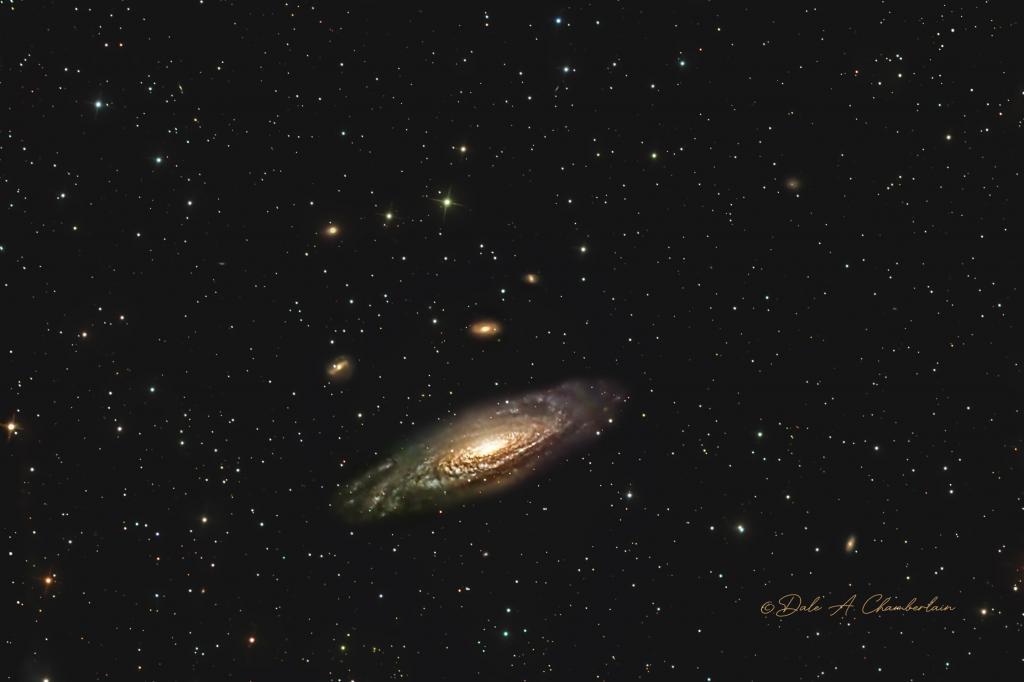
Object: NGC 7331 is the brightest galaxy in Pegasus and is about 40 million light years away. This spiral galaxy was one of William Herschel’s earliest discoveries over 200 years ago. Although visible in large binoculars, it was missed by Messier. In many respects this galaxy resembles the famous, much-elongated, Andromeda Galaxy, M-31. This appearance is caused by its nearly edge-on alignment. NGC 7331 is rich in H-II (glowing Hydrogen/star forming) regions, like M-42 in our Milky Way Galaxy.
Early observers of the 18th and 19th centuries classified what we now know are galaxies as “spiral nebulae”. They noticed that these “spiral nebulae” are often accompanied by smaller, fainter neighbors. NGC 7331 is no exception. Various 19th Century observers reported the presence of eight suspected companions. Modern observations support the likelihood of a true galaxy cluster in the background, but NGC 7331 is probably not involved, and is much closer to us. Modern images show that five of the eight “companions” are just mis-identified stars or double stars. This error perhaps results from the poor telescopes used by the early observers. In addition to the true NGC galaxies in the image above, there is also a dimmer anonymous galaxy that is sometimes considered NGC 7325.
Radio emissions from the NGC 7331 area seem to engulf the nearby galaxy cluster, Stephan’s Quintet, located about 1.5 degrees to the southwest. This, along with evidence of a very faint filament of material stretching between Stephan’s Quintet and NGC 7331, argues for a past gravitational interaction. NGC 7320, the largest member of the Quintet, lies in the foreground of its more distant members, and is the most likely candidate for an ancient association with NGC 7331.
Taken: August 7, 2019
Telescope: Astro-Tech 14” RC with 0.65x focal reducer
Mount: Paramount ME II unguided
Camera: ZWO ASI1600MM-Pro (cooled to -15C; unity gain) Bin 2×2.
Focuser: Moonlite Nitecrawler
Filters used: Red, green and blue on a ZWO 8 position filter wheel
Exposures: 25x100s blue, 25x100s green, 25x100s red for a total exposure time of 2.08 hours; calibrated with 25 dark frames, 32 flat frames with 32 dark-flats.
Seeing Conditions:
Processed with PixInsight and Photoshop CC 2023